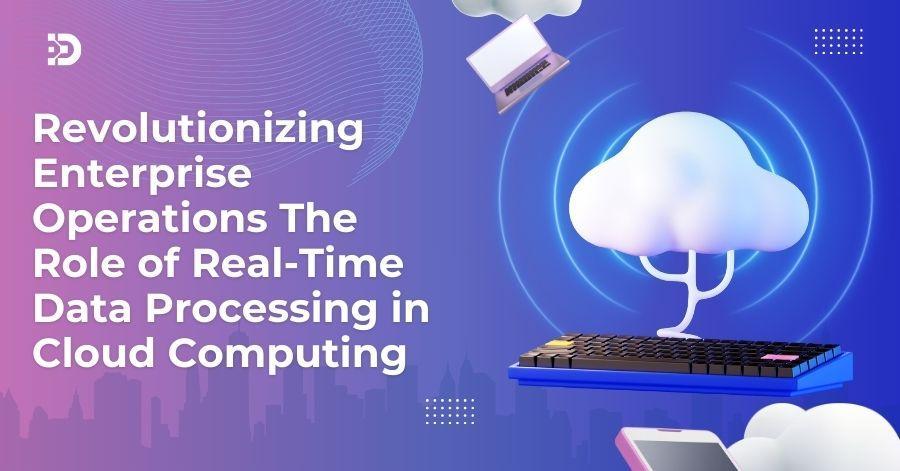In today’s fast-paced business environment, real-time data processing has become a crucial element for organizations looking to stay ahead of the curve. As businesses continue to evolve, leveraging cloud computing for processing vast amounts of real-time data has proven to be a game changer. Venkata Reddy Keesara’s work on the advancements in cloud-based real-time data processing highlights how this technology is reshaping enterprise operations and enabling more efficient decision-making.
The Paradigm Shift to Real-Time Data Processing
Real-time data processing in cloud computing has evolved significantly, driven by the explosion of data generation, reaching 17.2 petabytes daily. Traditional batch processing, handling only a few thousand transactions per minute, has been replaced by advanced streaming architectures capable of managing 100,000 events per second. This shift is vital for businesses seeking operational agility, with cloud adoption for real-time processing growing by 72% since 2021, reflecting its essential role in modern business operations.
Boosting Business Value and Enhancing Customer Experience
Adopting real-time data processing delivers substantial business benefits. Companies report a 42% reduction in operational costs, a 31% boost in customer satisfaction, and a 28% increase in market responsiveness. Decision-making times have decreased from 12 minutes to just 3.5 seconds. Additionally, system reliability has improved, with a 67% reduction in downtime and a 45% increase in resource utilization, highlighting the competitive advantages of cloud-based real-time data solutions.
Architectural Strategies and Technical Foundations
The success of real-time data processing hinges on robust architecture and infrastructure. A typical three-tier architecture, consisting of presentation, processing, and data layers, ensures optimal performance. The processing tier is crucial, managing concurrent requests while maintaining low response times, usually around 32 milliseconds, even during peak traffic. Microservices and dynamic service scaling are essential for handling fluctuating loads efficiently, with resource optimization reaching 88%. Load balancing techniques are employed to enhance system reliability and maximize resource usage. Performance optimization is equally critical, with adaptive load-balancing algorithms reducing request failures by 71% and improving resource allocation by 83%. Predictive scaling further optimizes resource allocation, cutting infrastructure costs by 45%. These strategies ensure near-perfect resource utilization and consistent performance, especially in mission-critical environments.
Edge Computing in Enhancing Latency and Bandwidth Efficiency
Emerging technologies such as edge computing are proving vital in the evolution of real-time data processing. By bringing computational power closer to the data source, edge computing significantly reduces latency and optimizes bandwidth utilization. Hybrid approaches, which combine edge computing with cloud-based processing, are being adopted to achieve reductions in data transfer latency by up to 78%. This integration has improved real-time response capabilities, especially in sectors like IoT and predictive maintenance, where immediate action is needed. For instance, organizations implementing edge computing in conjunction with cloud analytics have reported a 43% reduction in data transfer latency, which has been a game changer for real-time decision-making.
Security Real-Time Data Environments
As organizations increasingly depend on real-time data for critical operations, security and compliance have become top priorities. Advanced security frameworks are crucial to protect data throughout its lifecycle. Real-time security monitoring has reduced incidents by 62% while maintaining 92% system throughput. Encryption systems have achieved 850 MB per second throughput, ensuring data security without sacrificing performance. Additionally, role-based access control systems enhance security by accurately enforcing access while managing thousands of authorization requests per second.
The Future of Real-Time Data
The future of real-time data processing will be shaped by the convergence of quantum-inspired algorithms, edge computing, and AI. Quantum algorithms will improve optimization in network and resource allocation, boosting efficiency and energy use. Edge computing will enhance processing reliability, even during disruptions. AI and machine learning will enable systems to self-optimize in real-time, creating intelligent, self-managing systems that make rapid decisions, further enhancing the value of real-time data.
In conclusion, Venkata Reddy Keesara’s work highlights how real-time data processing is transforming enterprise operations. By enhancing operational efficiency, customer experience, and security, cloud computing empowers businesses to thrive. With the continuous development of edge computing, AI, and quantum-inspired algorithms, real-time processing holds vast potential to drive innovation and business success in a data-driven world.



































